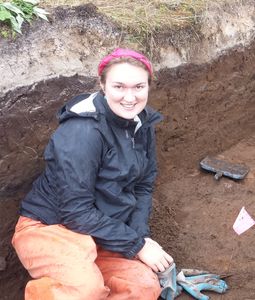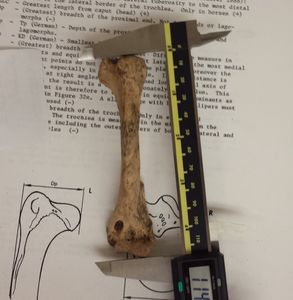Hello there! My name is Hannah, and I am a graduate student at the University of Oregon, and your guest blogger for the week!

My study focus is on zooarchaeology, which is the study of animal remains, like bones and teeth. I’m especially interested in how humans and mammals interacted in coastal environments over time and how archaeology might intersect with understanding wildlife conservation. My recent research has been about sea otter populations in the past in the state of Oregon. I’m interested in understanding how Oregon sea otter populations have differed from those in California and Washington over thousands of years so we can understand how to best manage them today.

Even though I study sea otter bones, I have never seen a wild sea otter before this Saturday, when we had a bonfire on a beach at Chiniak here on Kodiak. This is because sea otters were nearly extirpated (or basically rendered extinct) along the Northwest Coast by the 1900s, except for a few groups in Alaska and California. Attempts to reintroduce the species to Oregon failed, so it wasn’t until I left the state I could see one in the wild! Thankfully the sea otter is doing better in some areas, and has been reintroduced in British Columbia and Washington.

However, it is interesting for me to think about sea otters in Alaska specifically, because sea otters were extirpated largely due to Russian hunting – the incoming Russian traders pressured and forced the Alutiiq and other Native peoples along the Pacific coast to obtain sea otters for the 18th and 19th century fur trade. So while sea otters had been hunted before, it was hunted to an unprecedented degree for its furs in this era. Based on the artifact types recovered from the site of Karluk on Kodiak, dug and housed at the Alutiiq Museum, a recent publication suggests sea otters were not intensively hunted until Russian fur traders arrived (Steffian et al. 2015).
The history of sea otters in Alaska from prehistory to the modern day is about conservation, discussions of colonialism, indigenous rights, and environmental and human exploitation. Being on this beautiful island has reminded me of the interdisciplinary nature of archaeology – it is complicated and messy beyond the mud and dust.
Check out the newest book from the Alutiiq Museum: Steffian, Amy, Marnie Leist, Sven Haakanson, and Patrick Saltonstall. 2015. Kal’unek: From Karluk. University of Alaska Press, Fairbanks.
I loved reading your post, Hannah. I am thrilled you got to see the sea otters LIVE.